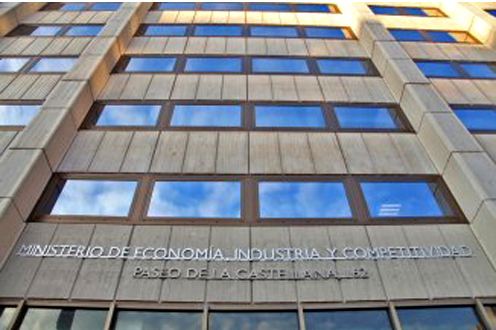Average growth of the Spanish economy in 2016 held steady at 3.2%, nearly twice that of the Eurozone
News - 2017.3.2
Growth composition is more balanced since contribution from internal demand has eased while external demand has contributed half a point to GDP growth, after two years of negative growth. For the second year running, employment growth is close to 3% (2.9% average in 2016), which represents the creation of 481,668 full-time equivalent jobs.
National Accounting data for year-end 2016 shows that the Spanish economy is maintaining a strong growth rate; over 3% in the last two years. This means positive rates have been posted for three straight years, after five years of recession, maintaining Spain at a GDP growth rate which is nearly twice that of the Eurozone (1.7%). This also represents a more balanced growth model, since net external demand contributes half a point in 2016, after two years of negative figures. The Spanish economy closed last year with a current account surplus at 2% of GDP for the fourth consecutive year, a record high.
Internal demand contributes 2.8 points to the growth rate, although at a lower rate of growth due to a lower contribution from investment and public consumption. Nevertheless, investment grew at an average annual rate of 3.1%, very much in line with economic activity as a whole. In this respect it is worth noting the strong growth of investment in capital goods (5%) and, to a lesser extent (1.9%), in construction. Meanwhile private consumption is showing signs of greater dynamism and is up by four tenths to 3.2% in terms of the annual average, the same rate as for the economy as a whole. The upward trend in consumption reflects consumer confidence in the Spanish economy and job creation.
Job creation is up by a yearly average of 2.9%, one tenth less than the previous year, representing the creation of nearly half a million full-time equivalent jobs. Practically all economic growth has been passed on to employment; this has particularly been the case in the last two years. If this rate were to be maintained, the target of recovering a total figure of 20 million jobs by the end of the current legislature would be achieved with ease. Job creation is growing practically on a par with the remuneration of all salaried workers (3.2% over the year as a whole). These figures are also compatible with gains in the real purchasing power of employee compensation (0.2%), since in 2016 average annual inflation was negative (-0.2%).
In the fourth quarter of 2016, the quarter-on-quarter growth rate of the Spanish economy was 0.7% versus the 0.4% of the Eurozone. This is the same rate as was posted in the third quarter of the previous year, which shows that the Spanish economy did not lose impetus in the closing months of the year.
In year-on-year terms, the fourth quarter posted a 3% gain, versus 3.2% in the previous quarter. Spain is therefore entering 2017 with a rate of growth that is still high, which brings the target of returning to the income levels prior to the crisis ever closer. Employment grew by 2.7% in the fourth quarter over the same period of the previous year; 463,000 jobs were created in the previous twelve months.





